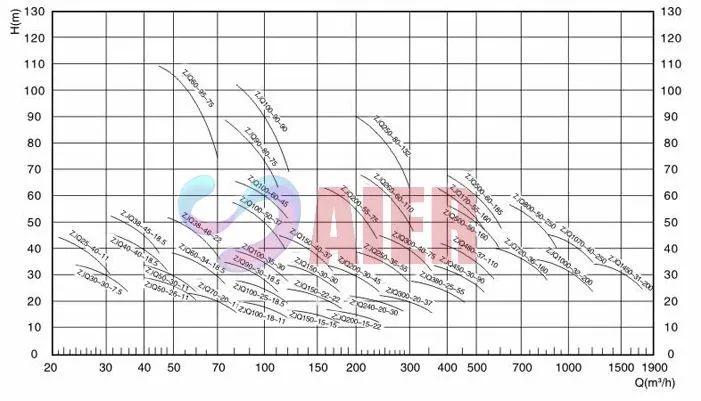فېۋرال . 06, 2025 05:57 Back to list
Polyurethane impeller
Selecting the right slurry pump for an application is more than just a matter of understanding flow rates and pressures; it's about ensuring the longevity, efficiency, and reliability of your entire industrial operation. For professionals familiar with Warman slurry pumps, the selection process leverages a combination of proven engineering principles, practical field experience, and an in-depth understanding of the material being transported. Here’s a comprehensive guide to help industry professionals make informed decisions when selecting Warman slurry pumps.
Warman pumps are available with components made from various materials, including high-chrome alloys, elastomers, and ultrahigh molecular weight polyethylene. Selection depends largely on the abrasive and corrosive nature of the slurry. High-chrome alloys provide excellent wear resistance and are suitable for highly abrasive conditions. Conversely, elastomer-lined pumps are suitable for corrosive slurries or those containing finer, softer solids. Balancing Efficiency and Maintenance Efficiency and maintenance are often competing priorities. While selecting a larger pump might seem advantageous for managing heavy loads, oversized pumps can lead to inefficient operations and excessive energy consumption. Conversely, an undersized pump risks excessive wear and reduced lifespan. Scheduled maintenance ensures operational efficiency and extends the life of pump components. Warman offers advanced monitoring technologies, allowing predictive maintenance practices that minimize downtime and prevent catastrophic failures. Properly documenting wear patterns and component life cycles assists in fine-tuning maintenance schedules and optimizing pump reliability. Operational and Environmental Considerations Operational factors such as temperature, altitude, and environmental regulations also play a role in pump selection. Extreme temperatures can affect the viscosity of the slurry and impact pump performance, and installations at high altitudes may require adjustments to motor specifications due to reduced air density. Additionally, environmental regulations may impose restrictions on noise levels or emissions, guiding the selection of auxiliary equipment such as drive systems and noise-reducing enclosures. Conclusion Selecting the right Warman slurry pump is a complex decision that blends expertise across engineering disciplines with practical insights from field operations. An ideal pump selection not only fulfills the immediate needs of handling the slurry but also enhances operational reliability and sustainability. For organizations that rely on slurry transport as a critical component of their processes, an efficient, well-selected pump can mean the difference between uninterrupted productivity and costly downtime. By understanding and implementing the principles outlined in this guide, industry professionals can make informed, strategic decisions in their slurry pump selection strategy.


Warman pumps are available with components made from various materials, including high-chrome alloys, elastomers, and ultrahigh molecular weight polyethylene. Selection depends largely on the abrasive and corrosive nature of the slurry. High-chrome alloys provide excellent wear resistance and are suitable for highly abrasive conditions. Conversely, elastomer-lined pumps are suitable for corrosive slurries or those containing finer, softer solids. Balancing Efficiency and Maintenance Efficiency and maintenance are often competing priorities. While selecting a larger pump might seem advantageous for managing heavy loads, oversized pumps can lead to inefficient operations and excessive energy consumption. Conversely, an undersized pump risks excessive wear and reduced lifespan. Scheduled maintenance ensures operational efficiency and extends the life of pump components. Warman offers advanced monitoring technologies, allowing predictive maintenance practices that minimize downtime and prevent catastrophic failures. Properly documenting wear patterns and component life cycles assists in fine-tuning maintenance schedules and optimizing pump reliability. Operational and Environmental Considerations Operational factors such as temperature, altitude, and environmental regulations also play a role in pump selection. Extreme temperatures can affect the viscosity of the slurry and impact pump performance, and installations at high altitudes may require adjustments to motor specifications due to reduced air density. Additionally, environmental regulations may impose restrictions on noise levels or emissions, guiding the selection of auxiliary equipment such as drive systems and noise-reducing enclosures. Conclusion Selecting the right Warman slurry pump is a complex decision that blends expertise across engineering disciplines with practical insights from field operations. An ideal pump selection not only fulfills the immediate needs of handling the slurry but also enhances operational reliability and sustainability. For organizations that rely on slurry transport as a critical component of their processes, an efficient, well-selected pump can mean the difference between uninterrupted productivity and costly downtime. By understanding and implementing the principles outlined in this guide, industry professionals can make informed, strategic decisions in their slurry pump selection strategy.
Latest news
-
China Slurry Pump Rubber Parts - Durable & Custom Solutions
NewsMay.20,2025
-
Heavy Duty Vertical Froth Pumps - China Factories & High-Quality Suppliers
NewsMay.20,2025
-
High-Quality Excavator Dredge Pump Suppliers China Manufacturers
NewsMay.19,2025
-
China Slurry Pump Rubber Parts - Durable & Custom Solutions
NewsMay.19,2025
-
China Electric Submersible Slurry Pump - Durable & High-Efficiency Solutions
NewsMay.19,2025
-
Heavy Duty Slurry Pump Manufacturers OEM & High-Quality Solutions
NewsMay.18,2025
